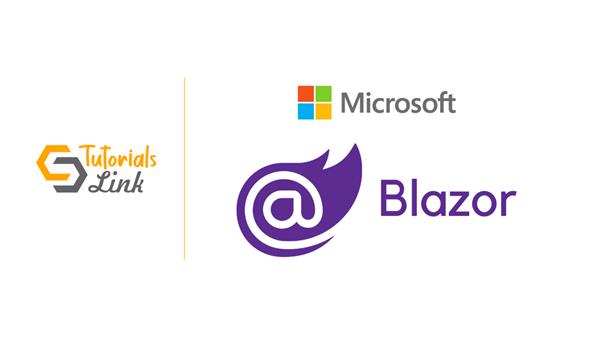Securing Your Blazor WebAssembly Applications: A Developer's Guide
Blazor WebAssembly offers a compelling way to develop interactive web UIs with C#. However, its unique architecture presents distinct security considerations. Unlike Blazor Server, where code runs on the server, Blazor WebAssembly executes client-side within the user's browser. This means the application code is accessible to users, posing potential security risks. This article dives into securing your Blazor WebAssembly applications, exploring best practices for client-side and server-side security.
Client-Side Security Challenges
The biggest challenge in Blazor WebAssembly security lies in the client-side nature of the application's code. Since the .NET code is compiled to WebAssembly (WASM) and downloaded to the user's browser, it can be inspected, decompiled, and potentially tampered with by malicious users. This can lead to various security vulnerabilities:
- Sensitive Information Exposure: Never store secrets like API keys, connection strings, or passwords directly in your Blazor WebAssembly code. These can be easily extracted by attackers.
- Authorization Bypass: Client-side authorization checks can be bypassed if users can modify the code. Always perform authorization on the server side.
- Cross-Site Scripting (XSS): Malicious users could inject scripts into your application, potentially leading to data theft or session hijacking.
Best Practices for Client-Side Security
Here are some key strategies to mitigate client-side security risks in Blazor WebAssembly:
- Minimize Client-Side Logic: Move sensitive logic, such as authentication and authorization, to a secure server-side API. This keeps critical operations outside the reach of client-side tampering.
- Secure Data Storage: Avoid storing sensitive data like user tokens or financial information in browser storage (local storage or session storage). These mechanisms are not tamper-proof.
- Input Validation: Implement robust validation on the client side to prevent users from injecting malicious code or data into your application. However, remember that client-side validation is not a replacement for server-side validation.
- Content Security Policy (CSP): Configure a CSP to restrict the sources from which your application can load scripts, styles, and other resources. This helps prevent unauthorized scripts from executing in your application.
- Regular Security Updates: Stay updated with the latest Blazor libraries and frameworks to benefit from security fixes and patches.
Server-Side Security Considerations
While the client side poses unique challenges, server-side security remains crucial for Blazor WebAssembly applications. Here's what to consider:
- API Security: Implement strong authentication and authorization mechanisms on your server-side API to control access to sensitive data and functionalities.
- Input Validation on the Server Side: Validate all user input on the server side, even if it's already validated on the client side. This ensures data integrity and prevents malicious attacks.
- Secure Data Storage: Store sensitive data like user passwords securely on the server using hashing and salting techniques. Additionally, consider using database encryption for added protection.
Authorization in Blazor WebAssembly
Authorization determines which users can access specific resources or functionalities within your application. Since client-side authorization can be bypassed, always perform authorization checks on the server side:
- Implement an Authentication Mechanism: Use a well-established authentication library (e.g., IdentityServer) to manage user logins and generate access tokens.
- Protect API Endpoints: Secure your server-side API endpoints to ensure only authorized users with valid tokens can access them. Implement authorization checks within your API controllers.
- Send User Information: When a user interacts with your Blazor WebAssembly application, send their authentication token to the server along with any requests. This allows the server to verify the user's identity and authorization level.
Data Protection in Blazor WebAssembly
While Blazor WebAssembly doesn't offer built-in data protection features, you can leverage server-side mechanisms:
- Store Sensitive Data on Server: Store sensitive user data like credit card information or personally identifiable information (PII) on the server, not in the client-side application.
- API Communication for Data Access: Develop a secure server-side API for users to access and manage their data. Implement proper authorization checks before allowing any data access operations.
- Data Encryption: Consider encrypting sensitive data at rest (stored on the server) and in transit (in transit) between the client and server. This adds an extra layer of security in case of breaches.
Coding Example: Sending Encrypted Data to Server
Here's a basic example demonstrating how to encrypt data in a Blazor WebAssembly application before sending it to the server:
public class MyComponent
{
private readonly HttpClient _httpClient;
public MyComponent(HttpClient httpClient)
{
_httpClient = httpClient;
}
public async Task SendEncryptedData(string data)
{
// Use a library like AesGcm for encryption (replace with your chosen library)
var encryptedData = EncryptData(data);
var content = new StringContent(JsonConvert.SerializeObject(encryptedData), Encoding.UTF8, "application/json");
await _httpClient.PostAsync("/api/data", content);
}
private byte[] EncryptData(string data)
{
// Implement encryption logic using your chosen library
// This example is for demonstration purposes only and should be replaced with a robust implementation
var key = Encoding.UTF8.GetBytes("your-secret-key");
var iv = Encoding.UTF8.GetBytes("initialization-vector");
using (var aes = new AesGcm(key))
{
return aes.Encrypt(iv, Encoding.UTF8.GetBytes(data));
}
}
}
Explanation:
- This code snippet demonstrates sending encrypted data to a server API endpoint (
/api/data). - It utilizes a fictional
EncryptDatamethod to encrypt the data before serialization. - In reality, you'd use a dedicated encryption library like
AesGcm(replace with your preferred library) to perform the encryption with a secure key and initialization vector. - The encrypted data is then serialized to JSON and sent to the server using the
HttpClient.
Server-Side Decryption:
On the server side, you'll need to implement logic to decrypt the received data using the same key and initialization vector used for encryption. This ensures that only authorized parties with the key can access the sensitive information.
Conclusion
Building secure Blazor WebAssembly applications requires a multi-layered approach. By following best practices for client-side and server-side security, implementing proper authorization, and leveraging server-side data protection mechanisms, you can significantly reduce the risk of attacks and safeguard your users' data. Remember, security is an ongoing process, so stay updated with the latest threats and vulnerabilities to maintain a robust and secure Blazor WebAssembly application





